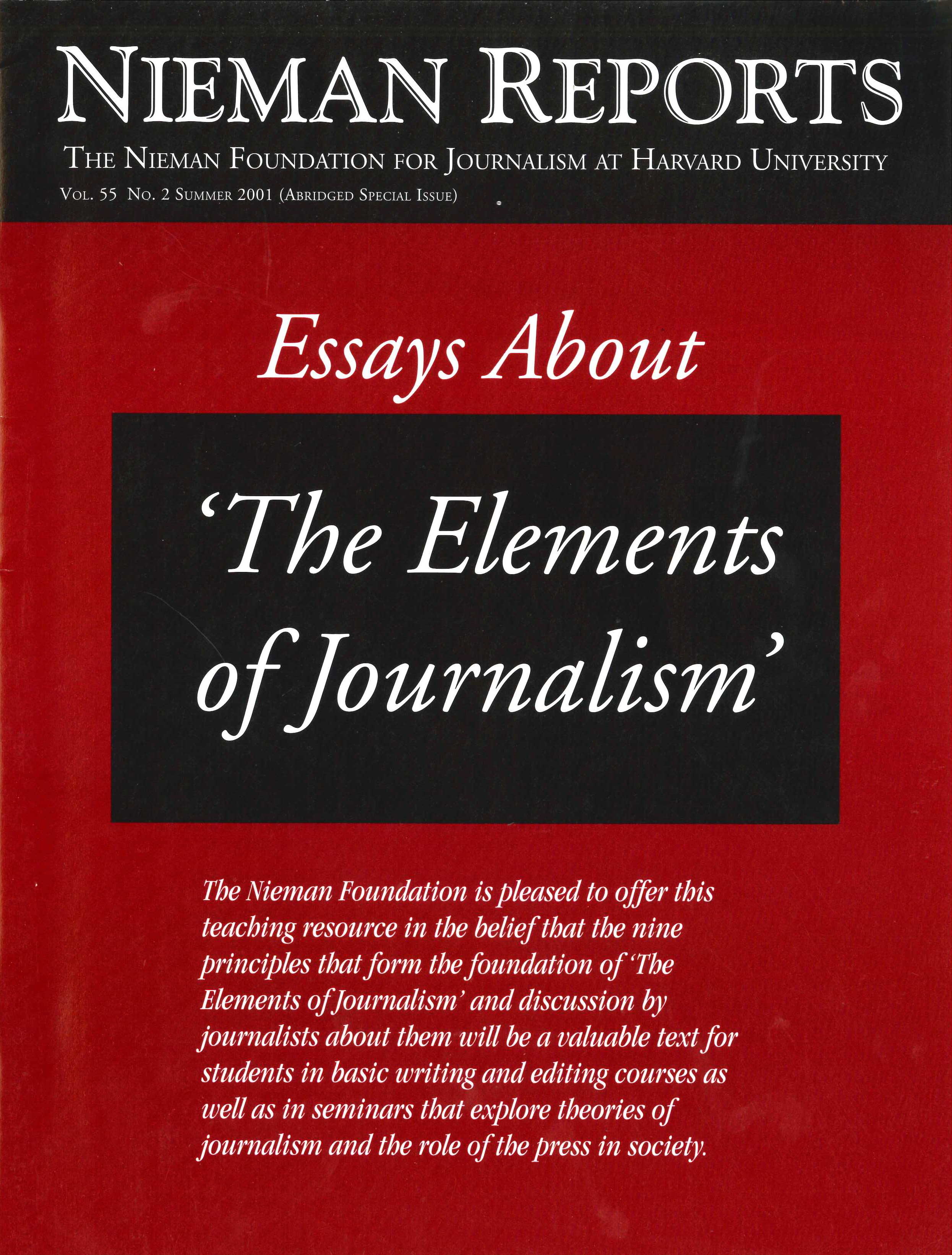Reporters, who are in the best position to pick up the sentiments of readers and would-be readers, often complain to me that the public no longer sees us as either engaging or relevant. Complaints, however, are rarely followed by any serious analytical thought about how we got into this sorry mess and how we might somehow climb out of it. Perhaps the Kovach and Rosenstiel book will help focus our minds.
The obvious villain, of course, is the news industry and its collective lust after very high profits. The last era of relatively good (relevant and engaging) newspaper journalism rose in the late 1960’s and survived until the early 1980’s when “The Age of Gannett” began and ushered in a crackdown by publishers, who’d complained bitterly during the 1970’s that they had lost control over their editors and reporters.
Perhaps this disjunction between reporters’ and publishers’ perspectives on how news can be conveyed engagingly should not surprise us. This is, after all, a business in which advertisers, not subscribers, pay the fare. And this fact creates the central fallacy of the business. When a reader pulls the Daily Blatt out of the box, he or she perceives the transaction in an innocent simplicity. The reader bought the paper, right? But, in fact, the major financial transaction happened when the publisher sold the readers’ attention to advertisers for many times the value of the coins put in the box.
So it is that the journalistic content of the newspaper is ultimately a loss leader. And the shrewd businessperson strives to make loss leaders as formulaic, efficient and cheap as possible. The rise of Gannett-think brought this insight into sharp focus. The scope of the newsroom was inexorably narrowed; the once-sacred role of the reporter as observer-analyst was transmogrified into that of information gatherer; the most compliant editors were promoted; the chain of command became six notches more militaristic, and hot-button news flowered into a star-crazy sensationalism.
When I was a young reporter, I was taught that the function of a newspaper was to report news and mirror society. This was in the mid-1960’s, when Nicholas von Hoffman of the Los Angeles Times wrote what became known as the “Haight-Ashbury” series, in which he portrayed for the first time the gathering of flower children in San Francisco. Other reporters, reading the von Hoffman piece, discovered similar gathering places in their towns. Suddenly the nation awakened to find the New Age all around it.
So why did Nick discover this, instead of some reporter in Kansas City or New York? The answer: reportorial vision, on an heroic scale. Youngsters like me were captivated by the power of it. I, for one, bought into the mirroring aspect of journalism and spent the following decades explaining complicated subjects and writing true short stories that let the reader walk for a while in another person’s shoes.
Readers love these kinds of stories. Tom Hallman, who just won a Pulitzer Prize for a story about a patient’s saga to find himself, provoked many thousands of reader calls, letters and e-mails. You want relevant? You want engaging? The stories are there, and so are the reporters, though few young ones are being trained.
Why is this kind of journalism so rarely allowed? The question is, of course, rhetorical. Such stories are expensive. They take specially trained reporters and equally expert editors ready to break newsroom rules of thumb and to fight the story through the copy desk. They are disruptive and time-consuming, as mirroring reality is wont to be. But by 1980 many newspapers had set up systems to do the job—special editing procedures, narrative-savvy copy editors, and the like. Soon, however, all bean counters saw was the expense. The mirrorer was viewed as fat to be trimmed, and was. In years since, feature writing, in general, has become softer, flabbier, more star-driven and sensational. And information gathering resembles the work of the long-vanished rewrite man going through stacks of releases and making a phone call or two. Covering the obvious.
All this makes for quarterly profits, but it does not build and expand a readership. It does not find new narratives to interest or engage. It does not function as an institution that binds us together. It drapes stories around the ads, but those stories seem less and less likely to distract from the advertisers message.
What should we do? For openers, we should take a recess from our front-page romanticism and face the reality: We journalists are thrall to the printing, advertising and distribution industries, and in recent decades we have steadily lost what little power we once might have had. This is not just a professional issue: It’s a social one. But as was the case with von Hoffman’s flower children, this critically important story is too close for most of us to see. It’s in our own newsrooms.
Jon Franklin is Philip Merrill Professor of Journalism at the Philip Merrill College of Journalism at the University of Maryland, College Park. He has won two Pulitzer Prizes, one for explanatory journalism (1985), the other for feature writing (1979), both while he worked for The Evening Sun in Baltimore.


